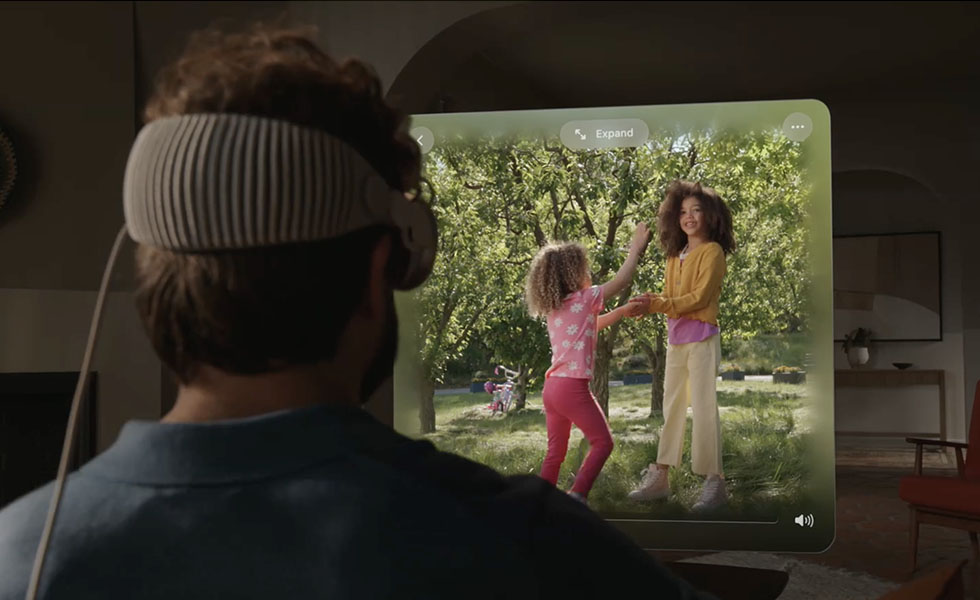Packed with technology
Apple rarely enters new markets. When they do, it instantly becomes the best product in the category. That’s the case with Apple Vision Pro, which is packed with category-leading technology including cameras, displays, motion sensors, and AI controls, plus integration of Apple’s best-in-class app ecosystem.
From a product design standpoint, Apple clearly understands one of the reasons why competing VR headsets have failed thus far: those devices block users off from the real world. Humans have a primal instinct to see and be connected to their surroundings. It’s a subtle but important vector to the adoption of wearables. Vision Pro uses high-fidelity cameras to enable the user to “see” the real world through a fully enclosed headset.
The Vision Pro’s distinctly natural user interface controls also stood out. The Macintosh had the mouse, iPod had the click wheel, iPhone had the touchscreen, Apple Watch had the digital crown. Vision Pro is controlled by eye movements to navigate menus, hand gestures to select, scroll, and expand, and voice to add text. You can also control the device with a Bluetooth keyboard and mouse. Most headsets on the market today struggle to solve the UI challenge because it requires both cutting-edge vision hardware and a healthy dose of AI to accurately use eye tracking, gestures, and voice as inputs.
